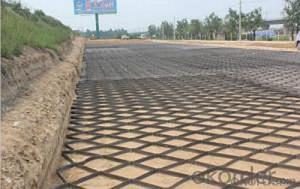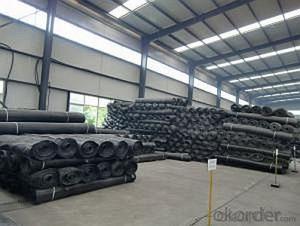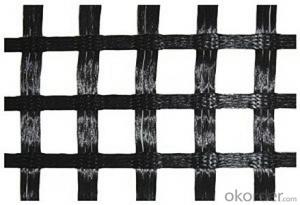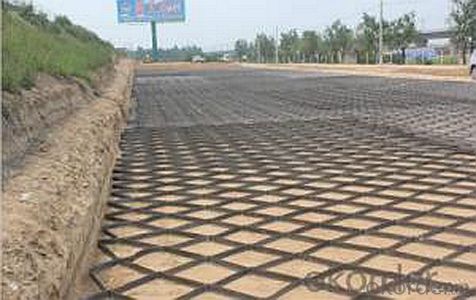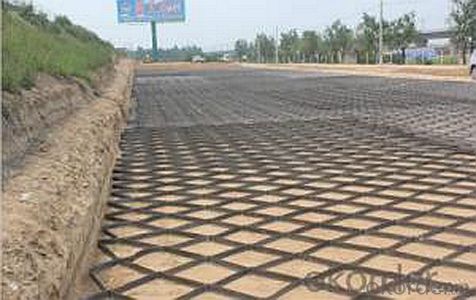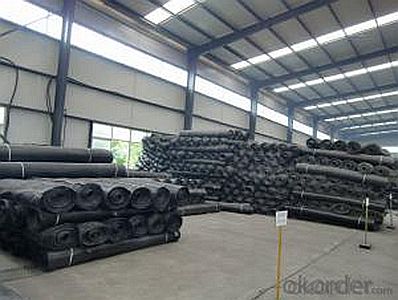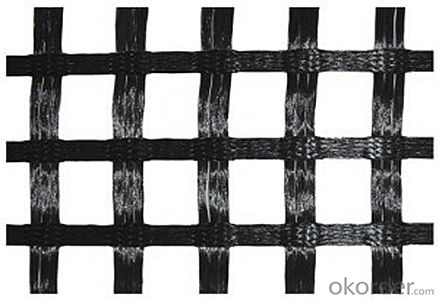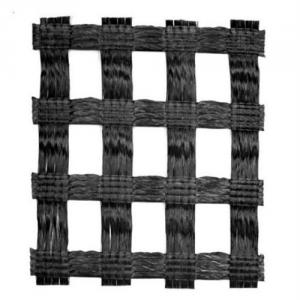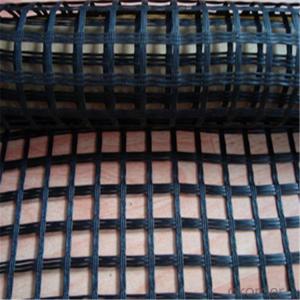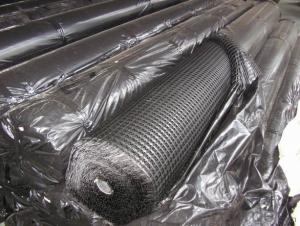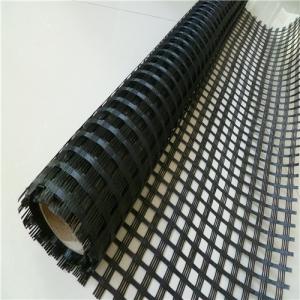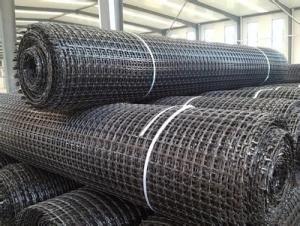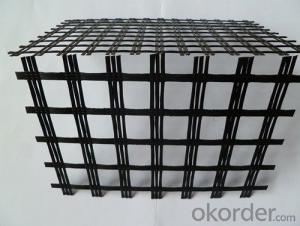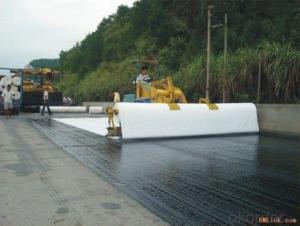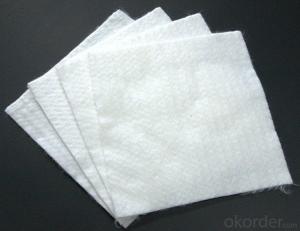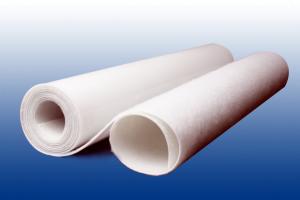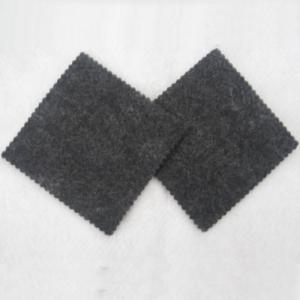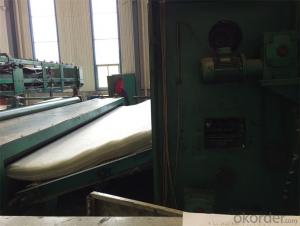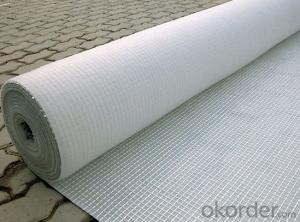Woven Monofilament High Tensile Strength Fiberglass Geogrid
- Loading Port:
- China main port
- Payment Terms:
- TT OR LC
- Min Order Qty:
- 1000 m²
- Supply Capability:
- 1000000 m²/month
OKorder Service Pledge
OKorder Financial Service
You Might Also Like
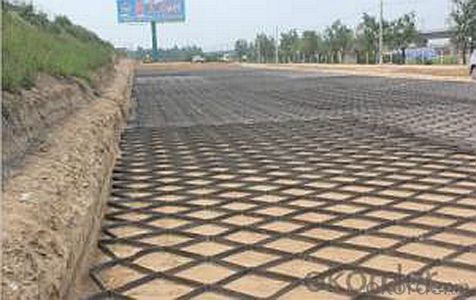
Fiberglass Geogrid Application
1. Road surface asphalt overlay construction engineering; Asphalt layers
reinforcement.
2. Converting old cement concrete road into composite road; Restraining
reflection cracking caused by block shrinkage.
3. Road extension; Preventing and controlling the cracking caused by new
and old combination and uneven settlement.
4. Treatment of the conjunction between tunnel and bridge or foundation.
Fiberglass Geogrid Introduction
Fiberglass geogrid is a kind of planar mesh material using alkali-free fiberglass yarn as
base body and then coated with high quality modified asphalt. It is warp knitted with
oriental structure which gives full play of yarn strength and improves its mechanical
property to make the product high tensile, tearing and creep-resistant. Moreover, the
composite property of coating with asphalt makes full protection of the fiberglass matrix
and greatly improves its wear and shear resistance. All the advantageous functions make
the product have a good performance in pavement strengthening, track cracking and solving
difficulties of strengthening the bituminous pavement.
Our Service
Quality assurance
1.On a regular basis or as per your request,we entrust national testing agencies to conduct quality inspections
2. Strictly in accordance with the ISO9001-2008 international quality system standard,we monitor and manage the whole process throughout production,quality testing,and measurement to ensure product quality
3. For quality-related construction delay or substandard construction(except for damage or losses due to customer’s responsibility or irresistible natural disasters),we have refunding,replacement,and repair services.We will respond to customers’ feedbacks on quality issues within 24 hours.
Packaging & Shipping
Packing: PLASTIC FILM INSIDE, AND WOVEN BAG OUTSIDE
Shipping: About 15 days after receipt the deposit
FAQ:
Q: What kind of payments does jenor support?
A: T/T, L/C, Cash are accepted.
Q: Do you charge for the samples?
A: Accordeing to our company policy, the samples are free, we only charge the freight fee. And we will return the freight fee during the next order.
Q: Can you produce according to customers' design?
A: Sure, we are professional manufacturer, OEM and ODM are both welcome.
Q: Do you have other products?
A: Yes, please check the pictures:
- Q: How to build a good geotextile sales team
- Any industry needs talent, geotextile sales staff do not need a high degree of education, can work hard on the line, I am specializing in the production of geotechnical materials, wish smooth
- Q: Can geotextiles be used in coastal dune stabilization projects?
- Yes, geotextiles can be used in coastal dune stabilization projects. Geotextiles are often employed to reinforce and stabilize sand dunes by trapping and retaining sand particles, preventing erosion caused by wind and water. They can be used in various applications such as dune formation, dune restoration, and beach nourishment projects to enhance the natural protection of coastal areas and mitigate erosion.
- Q: Can geotextiles be used in green wall construction?
- Yes, geotextiles can be used in green wall construction. They are often used as a base material to provide stability, drainage, and erosion control in green wall systems. Geotextiles help to retain soil and allow water to pass through, promoting healthy plant growth and preventing water buildup.
- Q: Detailing the geotextile standard which, how to apply their own
- Detailing the geotextile standard which, how to apply their own
- Q: How do geotextiles help with reinforcement of geosynthetic tubes?
- Geotextiles play a crucial role in the reinforcement of geosynthetic tubes by providing added strength and stability to the structure. They act as a barrier between the tube and the surrounding soil, preventing soil particles from infiltrating the tube and causing potential damage. Geotextiles also distribute loads evenly across the tube, reducing the risk of localized stress concentrations. By enhancing the overall stability and load-bearing capacity of the tube, geotextiles significantly contribute to the reinforcement and longevity of geosynthetic tubes in various engineering applications.
- Q: What are the applications of geotextiles in road construction?
- Geotextiles have several applications in road construction, including separation, filtration, reinforcement, and drainage. They are used to separate the subgrade soil from the aggregate base, preventing mixing and maintaining the structural integrity of the road. Geotextiles also act as a filtration layer, allowing water to pass through while preventing the migration of fine particles that can clog the drainage system. Additionally, they provide reinforcement to the road by distributing loads and reducing the potential for rutting and cracking. Lastly, geotextiles can be used for drainage purposes, helping to remove excess water from the road surface and subgrade, improving the durability and performance of the road.
- Q: Are geotextiles suitable for use in geotextile tube dewatering systems?
- Yes, geotextiles are suitable for use in geotextile tube dewatering systems. Geotextiles are commonly used in these systems to provide filtration and separation of water from solids. They allow water to pass through while retaining the solids, making them an effective solution for dewatering and sediment containment projects.
- Q: How are geotextiles used in agricultural applications?
- Geotextiles are used in agricultural applications to control soil erosion, improve water drainage, and provide stabilization for slopes. They are often placed under roads, walkways, and erosion-prone areas to prevent soil erosion and maintain the integrity of the land. Additionally, geotextiles can act as a filter to separate fine particles from larger ones, allowing for better water drainage and preventing clogging in drainage systems. Overall, geotextiles play a crucial role in enhancing agricultural practices and preserving the health of the soil.
- Q: How are geotextiles installed?
- Geotextiles are typically installed by laying them over the desired area and securing them with stakes or pins. They can also be anchored using sandbags or rocks, depending on the specific application. The installation process may involve preparing the ground, removing any debris or vegetation, and ensuring proper alignment and overlap of the geotextile rolls.
- Q: Such as title. The manager asked them to be made into a square meter compound. What materials can be used to bind them live. 502 glue can not be filled Cao Cao 丨 not only check the intestine Lu adhesive can not be used, glue rods can be used, but EVA is transparent after the appearance of poor adhesion. Neighborhoods. More
- EVA has a special adhesive material
Send your message to us
Woven Monofilament High Tensile Strength Fiberglass Geogrid
- Loading Port:
- China main port
- Payment Terms:
- TT OR LC
- Min Order Qty:
- 1000 m²
- Supply Capability:
- 1000000 m²/month
OKorder Service Pledge
OKorder Financial Service
Similar products
Hot products
Hot Searches
Related keywords
